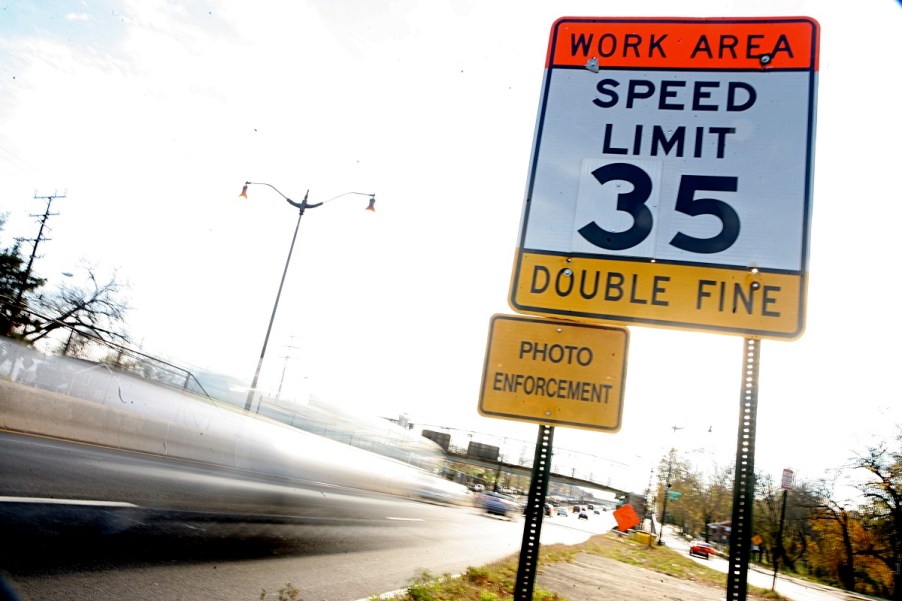
The Deadly Mistake You May Make All the Time
If you are like many drivers, you probably think going a few miles an hour over the speed limit is not a big deal. Drive down any highway and you will see cars racing in the left lane. Is speeding dangerous? The IIHS says even modest speeding can be deadly.

How did the IIHS determine that speeding is dangerous?
The Insurance Institute for Highway Safety is an independent organization. The IIHS’ priorities include compiling data and sharing test results which inform legislation. They also conduct independent tests on vehicles to determine their safety. In this instance, the IIHS conducted a series of tests to examine whether slight speeding was as dangerous as going way over the speed limit.
The IIHS collaborated with AAA and Humanetics, a company which makes crash test dummies. The tests were run by Calspan Corporation. They tested three 2010 Honda CR-Vs at three different speeds: 40 mph, 50 mph, and 56 mph. They found that the risk of death increased significantly, even from modest speeding.
During the 40 mph, the test found that there was minimal intrusion into the cab of the CR-V. This means fewer objects become a danger to vehicle occupants. However, during the 50 mph test, the driver side door was noticeably damaged. So was the dashboard and foot area.
Is even slight speeding dangerous? When the test was increased by just 6 mph to 56 mph, the CR-V cabin was “significantly compromised.” The dummies used in the tests had sensors which indicate how likely a serious injury would take place. The sensors in the 56 mph test registered severe neck injuries. There was also a high likelihood that the lower legs would have been broken.
Both the 50 mph and 56 mph tests resulted in the dummy’s head going through the airbag. In both tests the dummy’s face smashed into the steering wheel. The dummy’s sensors showed a high likelihood of a significant brain injury in each of these crashes.
Do high speed limits make speeding more dangerous?

56 mph was found to be fast enough to cause serious injury or even death, yet many people drive much faster than this on the highway. In addition to that, the IIHS notes that many drivers go faster than posted speed limits. Sometimes states will raise speed limits in accordance with travel speed. This doesn’t send the message that speeding is dangerous. A study performed in 2019 showed that doing this had led to 37,000 deaths.
There are currently 41 states which allow speeds of 70 mph, and eight states which allow motorists to travel 80 mph on at least some roads. Because of the rise in deaths related to increasing the speed limit, both the IIHS and AAA have tried to get lawmakers to consider this when they are debating whether to raise the speed limit.
As quoted by IIHS, Dr. David Yang, executive director of the AAA Foundation for Traffic Safety said, “A speeding driver may arrive at their destination a few minutes faster, but is the trade-off of getting severely injured or even losing one’s life worth it if a crash occurs?”
Would lowering the speed limit make motorists safer?
Yes, says Harkey. “Rather than raising speed limits, states should vigorously enforce the limits they have. This includes using proven countermeasures like high-visibility enforcement and carefully implemented speed-camera programs to consistently and equitably enforce speed limits 24/7.”
Will a safer vehicle negate the dangers of speeding?
No. Dr. David Harkey, president of the IIHS, said, “Higher speed limits cancel out the benefits of vehicle safety improvements like airbags and improved structural designs.” He went on to say, “The faster a driver is going before a crash, the less likely it is that they’ll be able to get down to a survivable speed even if they have a chance to brake before impact.”
Even if legislators don’t lower speed limits or enforce posted speed limits, there are things you can do to keep yourself and others safe. Driving a safe vehicle, wearing a seatbelt and correctly installing child seats and following traffic laws all reduce the likelihood of an accident. And if there’s anything to be learned from the IIHS study, it’s that maintaining a safe speed can be the difference between life and death.


